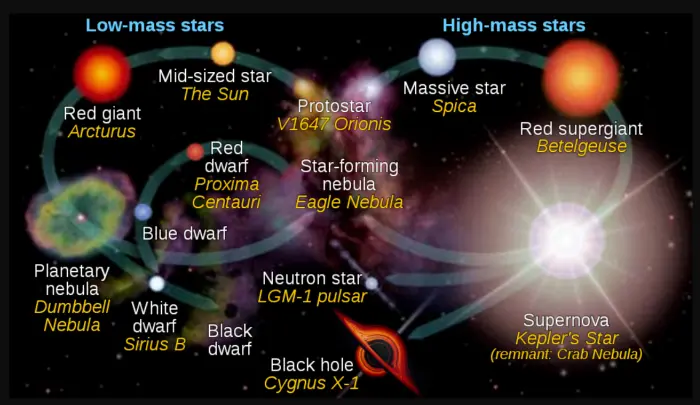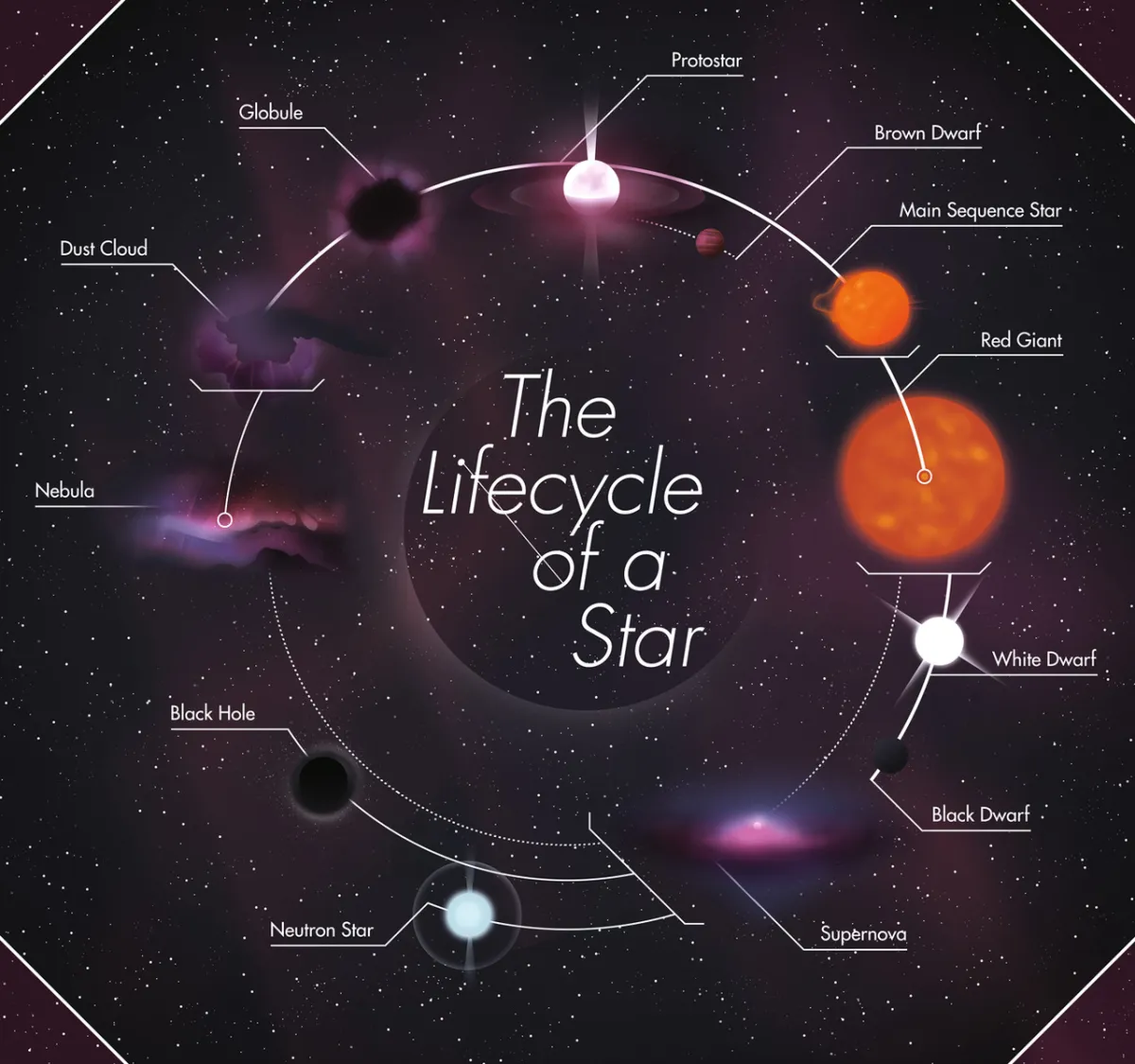The Stellar Life Cycle: From Cosmic Nurseries to Dramatic Deaths

The life cycle of a star is one of the most fascinating and consequential journeys in the universe. Every star begins its existence in a stellar nebula, a vast cloud of gas and dust. Within these cosmic nurseries, gravity pulls material together until enough pressure and heat are generated to ignite nuclear fusion, birthing a new star.
Two Divergent Paths of Evolution
Depending on its initial mass, a star will follow one of two dramatically different evolutionary paths:
1. Average Stars
These stars, which include our own Sun, lead long, relatively quiet lives:
As they exhaust their hydrogen fuel, they expand into a red giant.
They eventually shed their outer layers, forming a beautiful planetary nebula.
The remaining core becomes a dense white dwarf, which will quietly cool over billions of years.
2. Massive Stars
These stars live fast, fiercely, and die spectacularly:
They swell into a red supergiant.
When their fuel runs out, they explode as a supernova—one of the largest energy releases in the universe.
Depending on the remaining mass, the core can collapse into an incredibly dense, rapidly spinning neutron star, or completely implode to form a black hole—a region of spacetime where gravity is so strong that not even light can escape.
The Grand Role in the Cosmic Ecosystem
Studying the life cycle of stars does more than help astronomers predict the future of our Sun and the evolution of galaxies; it also explains the origin of the heavy elements.
Supernovae are the cosmic “factories” that create and scatter elements like carbon, oxygen, and iron—the elements essential for life—across the universe. Every stage of a star’s life contributes profoundly to the cosmic ecosystem, highlighting the profound interconnectedness of all matter.










